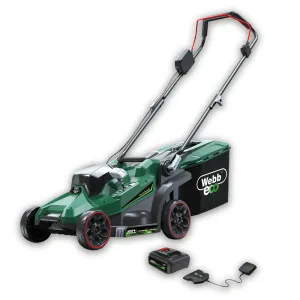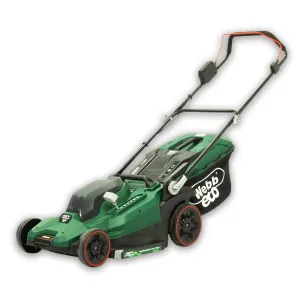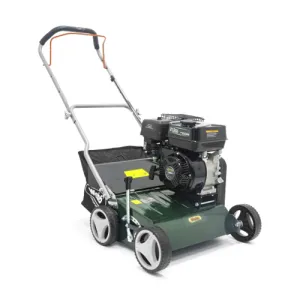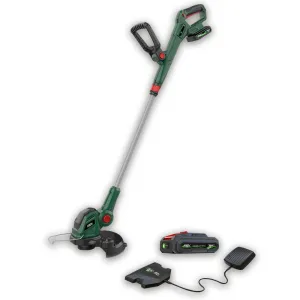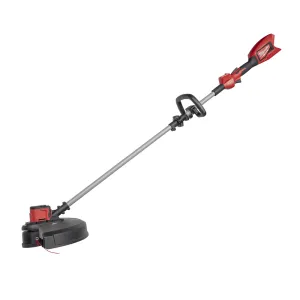Mowing the lawn might seem like a straightforward task: start up the mower, push it around, and call it a day. But a little extra thought can see you up your mowing game and creating an event-worthy lawn.
Timing
The main mowing season here in the UK runs from March to October, depending of course on where you live and what the weather has been like.
This period is not a rule however and it’s perfectly possible that you’ve mowed your lawn outside these months.
The key is to mow when the grass is growing, so you might find yourself mowing in February, but leaving the lawn alone during hot, dry summers when growth can slow right down.
Aim to mow once a week in spring and autumn, and possibly twice a week in the summer when growth is rapid. In cooler months or during droughts, you can ease off.
We’re often asked if you can mow wet grass, and the answer is, it depends… Take a look at our post on mowing wet grass here.
A quality mower
The right mower makes a massive difference. In the UK, cylinder mowers are fantastic for fine lawns, giving that classic striped finish, whereas rotary mowers are a bit more forgiving for family gardens with uneven ground or tougher grass. Self-propelled mowers will help with consistency; if you can, choose a model with active speed control to help with precision cutting.
But whatever mower you use, keep the blades sharp. Blunt blades tear rather than cut, which stresses the grass and makes it vulnerable to diseases.
Ideally, sharpen blades at least once a season, or even more often if you have a large lawn.
Right height
One of the biggest mistakes is cutting grass too short, often called "scalping." This weakens the lawn, invites moss and weeds, and exposes the soil to drought and disease.
As a general rule, never cut more than a third of the grass blade in one go. Here’s a quick guide to setting your mower height:
• Fine ornamental lawns: 1-2.5 cm
• General purpose lawns: 2.5-4 cm
• Shady areas: 5 cm or higher
During drought or hot spells, allow your grass to grow a bit longer to protect the soil and retain moisture.
When it comes to the last mow of the season, you can go a bit lower to help ensure air can circulate through to the ground preventing moss and fungi from getting hold in cooler wetter months.
Patterns matter
If you always mow in the same direction, your grass will start to lean that way and create ruts in the soil underneath. Mix things up: mow north-south one week, east-west the next, this will help strengthen your grass and keep it in good shape.
Consider a double cut if you’ve left the lawn alone for a while. Take 50% of the height off in the first mow, then let it rest for a couple of days before taking another 50% off. Doing this helps to avoid stressing the grass.
For that classic striped look, use a roller on the back of your mower. This flattens the grass blades in different directions, creating light and dark stripes depending on the angle of the sun.
Collect or leave clippings?
In general, if you're mowing regularly and only taking off small amounts, you can leave the clippings. They’ll break down quickly and return valuable nutrients to the soil, a process called grass-cycling.
However, if the lawn is overgrown, or if you’ve had to mow when the grass is wet, it’s better to collect clippings to avoid smothering the grass.
Edge Like a Pro
A neatly mowed lawn looks even better with crisp edges. After mowing, use a half-moon edging tool, trimmer or lawn shears to tidy up borders.
If you maintain your edges once or twice a month, it stops grass from creeping into borders and keeps everything looking sharp.
Consistency is key
When professionals mow the lawn, they are applying years of practice in mowing at consistent speeds – and this really does make a difference. The more consistent the speed, the smoother the finish.
But mowing your lawn correctly isn’t just about aesthetics - it’s about the health and resilience of your grass. A well-nourished lawn will always look better throughout the summer, so don’t neglect its nutritional needs at different points in the season.
By mowing at the right time, setting your mower height properly, and following good practices, you’ll have a beautiful, thriving lawn.
And remember: a little regular maintenance is far easier than battling to bring a neglected lawn back to life!




